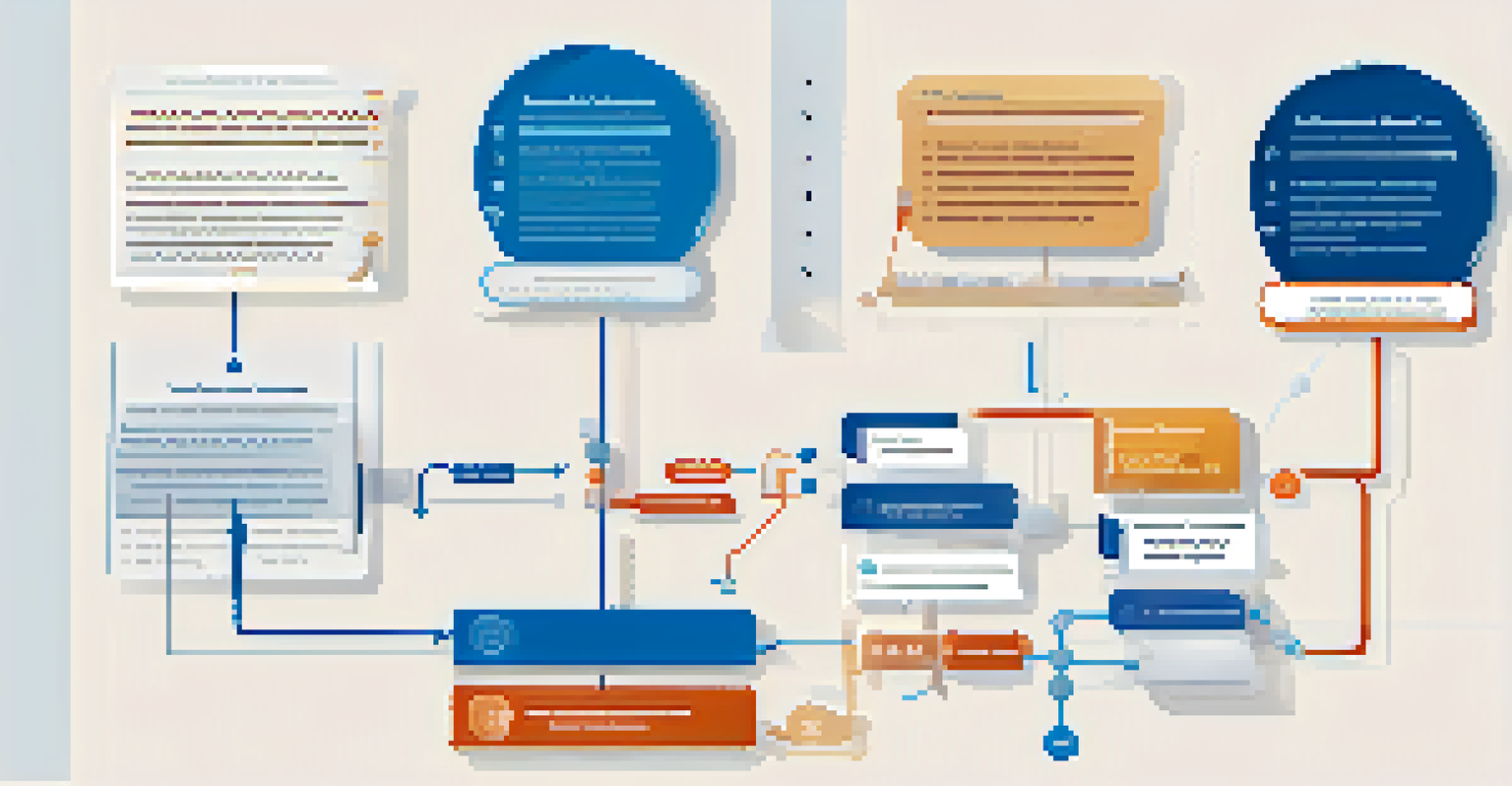Cognitive Load Theory: Applications in Online Learning

Understanding Cognitive Load Theory in Education
Cognitive Load Theory (CLT) is a framework that helps us understand how our brains process information. It suggests that our working memory has limited capacity, which means we can only handle a certain amount of information at once. By recognizing this, educators can design learning materials that align with how our minds naturally work, ultimately leading to more effective learning experiences.
The mind is not a vessel to be filled, but a fire to be kindled.
The theory divides cognitive load into three types: intrinsic, extraneous, and germane. Intrinsic load is the complexity of the material itself, while extraneous load refers to the way information is presented, and germane load relates to the effort learners invest in understanding. Balancing these loads is crucial in online learning environments, as it helps prevent cognitive overload and promotes better retention.
In practical terms, applying CLT means creating online courses that minimize unnecessary information and distractions. For instance, using clear visuals, breaking content into smaller chunks, and providing interactive elements can help learners focus and engage better. This thoughtful approach to course design can significantly enhance the learning experience.
The Role of Intrinsic Load in Online Learning
Intrinsic load refers to the inherent difficulty of the subject matter. For online learners, understanding this concept is vital for tailoring courses that match their existing knowledge and skills. When the intrinsic load is too high, learners may feel overwhelmed and struggle to grasp key concepts, leading to frustration and disengagement.

To manage intrinsic load effectively, educators should assess learners' backgrounds before designing their courses. For example, introductory courses should build on foundational knowledge, gradually increasing complexity as learners progress. This scaffolded approach ensures that students are not thrown into the deep end too quickly, allowing them to build confidence and competence.
Cognitive Load Shapes Learning Design
Understanding Cognitive Load Theory helps educators create effective online courses by balancing intrinsic, extraneous, and germane loads.
Additionally, using real-world examples and relatable scenarios can help make complex ideas more accessible. By connecting new information to familiar contexts, learners can better understand and retain what they are learning, making the journey through online education more enjoyable and effective.
Managing Extraneous Load in Online Learning Environments
Extraneous load arises from how information is presented and can be minimized through thoughtful design. In online learning, this includes factors like navigation, layout, and multimedia use. An overwhelming interface or excessive multimedia can easily distract learners, making it harder for them to focus on the content itself.
We learn something every day, and lots of times it’s that what we learned the day before was wrong.
To reduce extraneous load, it's essential to create a user-friendly interface that guides learners seamlessly through the material. For instance, using consistent navigation buttons, clear headings, and a logical flow can help learners find information quickly without unnecessary confusion. This structured approach allows them to concentrate on learning rather than figuring out how to use the platform.
Moreover, simplifying visual elements and avoiding clutter can also significantly enhance the learning experience. By ensuring that each component serves a purpose, educators can create an environment where learners can engage with the material without being sidetracked by extraneous distractions.
Enhancing Germane Load for Deeper Learning
Germane load is all about fostering cognitive processes that enhance learning and understanding. This type of load encourages students to make connections between new information and what they already know, promoting deeper learning. In online courses, it's important to create opportunities for learners to engage actively with the material.
Techniques like problem-solving tasks, discussions, and group projects can help increase germane load. For example, incorporating case studies that require students to apply their knowledge in practical scenarios encourages them to think critically and creatively. This active engagement not only helps reinforce learning but also makes it more enjoyable and meaningful.
Chunking Enhances Information Retention
Breaking down content into smaller, manageable chunks allows learners to process and retain information more effectively.
Furthermore, providing feedback throughout the learning process is another effective way to enhance germane load. Constructive feedback helps learners identify areas for improvement and reinforces their understanding, enabling them to take ownership of their learning journey.
Importance of Chunking Information in Online Learning
Chunking is a strategy rooted in Cognitive Load Theory that involves breaking down information into smaller, manageable units. This approach is particularly effective in online learning, where learners can easily become overwhelmed by large volumes of content. By organizing information into chunks, learners can process and retain material more efficiently.
For instance, instead of presenting an entire chapter at once, online courses can deliver information in bite-sized modules. This allows learners to focus on one concept at a time, reducing cognitive overload and promoting better understanding. Each module can then build on the previous one, creating a coherent learning path.
Incorporating quizzes or reflections after each chunk can further reinforce learning. This not only helps learners assess their understanding but also encourages them to engage with the content actively, making the learning experience more interactive and rewarding.
Utilizing Multimedia Effectively in Online Learning
Multimedia elements—such as videos, infographics, and interactive simulations—can enhance online learning when used appropriately. However, it's crucial to strike a balance to avoid overwhelming learners. Cognitive Load Theory emphasizes that while multimedia can facilitate understanding, excessive or poorly designed elements can lead to cognitive overload.
To utilize multimedia effectively, educators should aim for a harmonious blend of text, visuals, and audio. For example, when introducing a complex topic, a short video that summarizes key points can complement the written material. This multisensory approach caters to different learning styles and helps reinforce concepts.
Feedback Fuels Learning Progress
Timely and constructive feedback is essential in online learning, as it guides learners and enhances their understanding.
Additionally, it's essential to ensure that multimedia is relevant and purposeful. Each element should serve a specific function in enhancing understanding or engagement, rather than simply being decorative. By being intentional with multimedia use, educators can create a more enriching online learning experience.
Feedback and Assessment in Online Learning
Feedback is a critical component of effective online learning, as it provides learners with insights into their progress. According to Cognitive Load Theory, timely and constructive feedback can help reduce extraneous load and enhance germane load by guiding learners in their understanding. This two-way communication is essential for fostering an adaptive learning environment.
Incorporating various assessment methods—such as quizzes, peer reviews, and self-assessments—can provide learners with diverse feedback opportunities. This variety not only keeps learners engaged but also allows them to reflect on their understanding from different angles. For instance, peer reviews encourage collaboration and critical thinking, which are vital skills in online learning.

Furthermore, clear rubrics and criteria for assessments can help alleviate confusion about expectations. When learners know what is expected of them, they can focus their efforts on mastering the content rather than worrying about how they will be evaluated. This clarity ultimately enhances the overall learning experience.